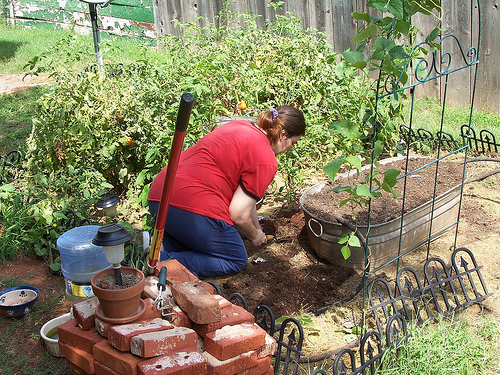By Liz Foster
Here in Arizona, summer is known for warm temperatures and constant sunshine. The sun is not discriminatory against anyone. Kids, hikers, construction workers, farmers, ranchers and even avid backyard gardeners are at risk for melanoma skin cancer and heat stress.
Living and working in the sun can increase the risk of skin cancer. However, farmers and ranchers can be at the top of the list for cancer because they work outside on a daily basis. And if you’re a backyard gardener out every day, you may be ranked up there right with Arizona’s farmers and ranchers! Too much exposure to the sun, fair complexions and severe sunburns as a child are risk factors, according to the American Cancer Society (ACS). Every year, over 1 million cases of skin cancer are diagnosed. In 2008, ACS estimates 62,480 cases were diagnosed as the more serious melanoma cancers. Melanoma cancers are also responsible for 8,420 of the 11,200 deaths from skin cancer each year. If detected early, melanoma is highly curable. Eighty percent of melanomas are diagnosed at the local stage where survival rate is 99 percent. Melanoma can spread to other parts of the body where survival rates range from 15 to 65 percent.
To prevent and reduce your risk of skin cancer, the American Cancer Society advises people avoid the sun from 10 a.m. to 4 p.m. If that is not an option ACS also advises people to wear wide brimmed hats that protect the neck, face and ears to keep your head and face cool. They also suggest wearing a long sleeved shirt at all times that is light colored and loose fitting except when working with machinery. The easiest prevention is to wear sunscreen with a sun protective factor (SPF) of 15 or higher. The ACS suggests reapplying sunscreen throughout the day as perspiration and water can decrease the effectiveness of the sunscreen.
Being smart about sun protection will reduce your risk of being diagnosed with melanoma skin cancer. According to ACS, a simple ABCD rule can be used in detecting problems:
- A is for asymmetry (one half of the mole does not match the other half)
- B is for border irregularities (are the edges ragged, notched or blurred?)
- C is for color (the pigmentation is not uniform)
- D is for a diameter of more than six millimeters (the size of a pencil eraser).
For more information, you can access the American Cancer Society at www.cancer.org.

